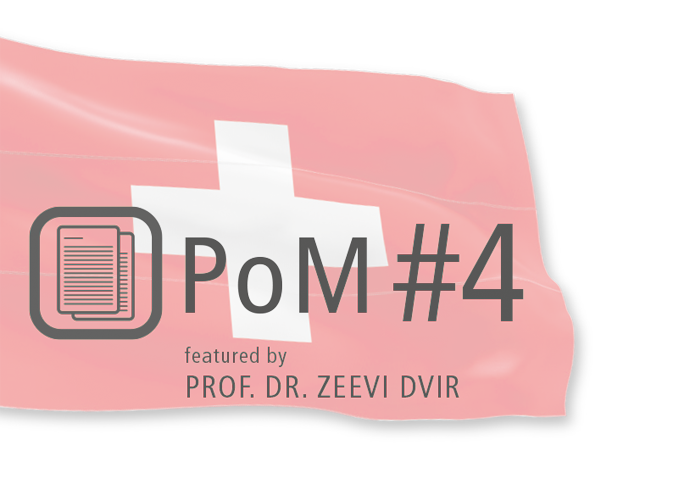
Prof. Dvir’s Commentary:
The paper by Huber et al is not the first to compare thigh muscles strength recovery after ACL reconstruction (ACLR), but is distinguished by a number of elements that merited its selection as a Paper of the Month (PoM). Specifically, the relatively large cohort of patients and the close attention to the issue of uniformity of the operative / rehabilitative procedures (e.g. single center, small surgical team, strict rehab protocols) and test standardization, enabled a meaningful clinical interpretation that may not have been possible before. In the context of the PoM, it is the latter aspect that deserves a special elaboration.
To start with, the choice of the test velocity – 120º/s – is an important feature of this study, particularly in view of the wide use of 60º/s as the ‘standard’ velocity for testing knee muscles. Among the advantages of its application 1. it is well tolerated by most patients with knee problems; 2. in the concentric mode, 120º/s is associated with a shorter exposure time and smaller joint/ligament loads, compared to 60º/s; 3. being a medium test velocity, it challenges physiological low and high velocity mechanisms. Therefore, since for concentric strength assessment a single test velocity should generally suffice, 120º/s is especially recommendable.
In addition to this feature, the authors elected to apply a simple set of outcome measures (OM), focusing on normalized (Nm/kgbw) strength of the quad and hams, bilateral strength symmetry and the prevalence of more than 10% asymmetry. Based on these OM, and within the framework of a 9-month post-op period, the authors concluded that strength recovery may potentially be better with the patellar tendon autograft.
With this isokinetic protocol in mind, one wonders in what way, if any, could the addition of eccentric testing change the conclusion of this study. Furthermore, as the authors did not relate to strength ratios, such as the DCR or DCRe, it would indeed be interesting to explore the meaning of such an inclusion. These reflections reinforce the need for meticulous studies leading to a standard method to test knee muscles function and in that respect Huber et al’s paper is an impressive step in this direction.
Read the complete study of Huber et al here
The paper may be purchased directly from the publisher.
More information on CON-TREX® units
Citation
Huber R, Viecelli C, Bizzini M, Friesenbichler B, Dohm-Acker M, Rosenheck T, Harder L, Maffiuletti NA. Knee extensor and flexor strength before and after anterior cruciate ligament reconstruction in a large sample of patients: influence of graft type. Physician and Sportsmedicine, 2018 Sep 25:1-6. doi: 10.1080/00913847.2018.1526627
Paper of the Month – the initiative
The main objective of the PoM initiative is to serve as an update forum for users of isokinetic dynamometry. Recent papers, generally of the last 3 preceding months, relating to this technology and its applications will be reviewed regularly by Prof. Zeevi Dvir, who will select those that in his opinion present an important/relevant contribution to the science of isokinetic testing and conditioning. The selection will consider the novelty, scientific rigor and possible applicability of the study without any prejudice, reflecting PHYSIOMED’s commitment to the highest standards the company stands for as a world leader in isokinetic technology.
Based at the Dept. of Physical Therapy, the Sackler Faculty of Medicine, Tel Aviv University, Prof. Dvir serves also as a Non-teaching Adjunct Professor at the Biomechanics and Ergonomics Lab, School of Kinesiology and Health Studies (SKHS), Queen’s University, Canada.
Prof Dvir is an international leader in isokinetics. He is the author of the widely recognized leading title in the field “Isokinetics: Muscle Testing, Interpretation and Clinical Applications” (Churchill Livingstone, 1st ed., 1995; Elsevier 2nd ed., 2004). He is also the Editor-in-Chief of Isokinetics and Exercise Science (IOS Press, Amsterdam, Holland) since 1998, the only international journal dedicated to the science and practical aspects of this technology. Prof. Dvir has published more than 60 papers on isokinetics. He coined the terms Dynamic Control Ratio (DCR), which is also known as the functional ratio. The DCR has mostly been applied in the context of muscular balance around the knee especially with respect to ACL deficiency and reconstruction and is expressed as the ratio: Hecc/Qcon. Prof. Dvir was also the first to describe the DCE (the Difference between the high and low velocity Ecc/Con ratios) to assess submaximal effort, a core concept in medicolegal analysis of muscular weakness. A US patent he owns paved the way to a series of papers describing the utilization of Short Range of Motion isokinetic testing and conditioning.